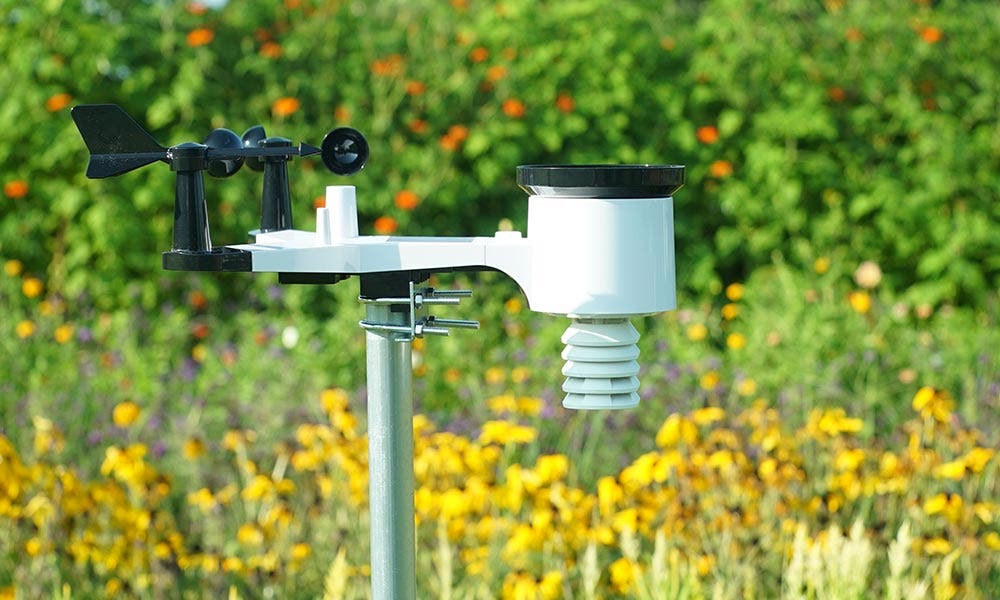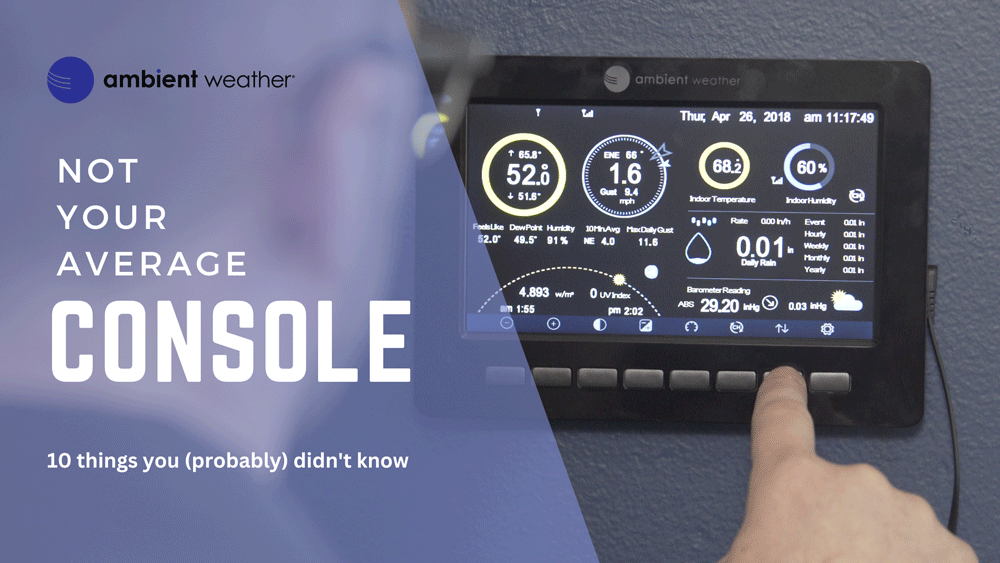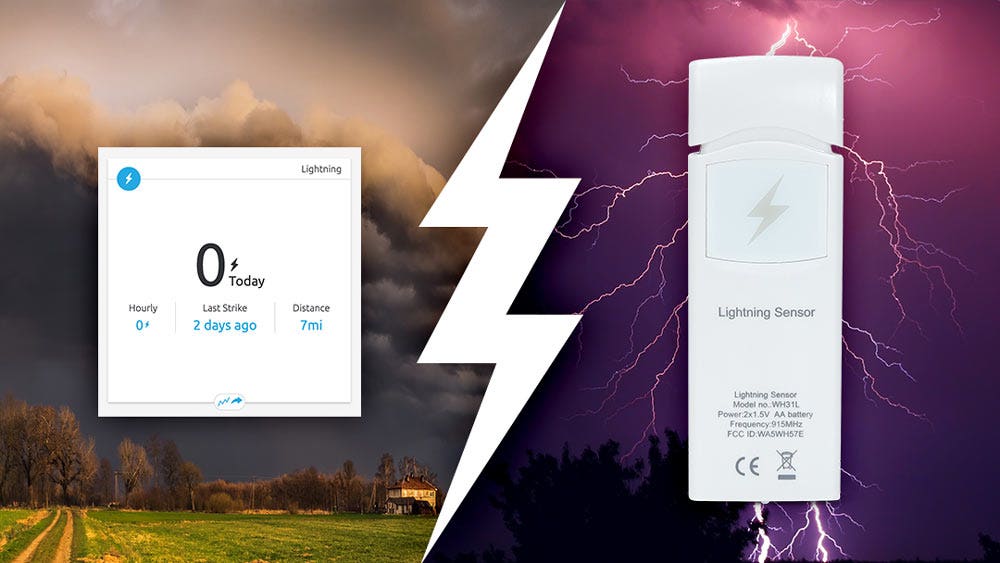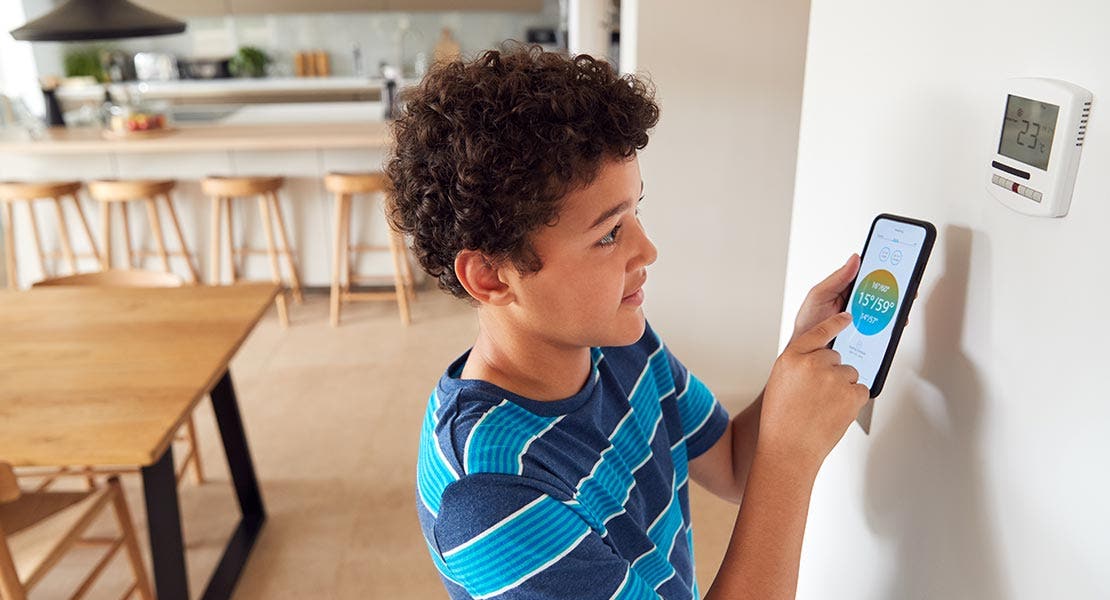Ambient Weather WH31L Lightning Detector for Models WS-2000, WS-4000, WS-5000, WS-1965
(Lithium AA batteries included)
The WH 31L Lightning detector is an add-on sensor that connects to either an Ambient Weather WS-2000, WS-4000, WS-5000, or WS-1965 weather station. The sensor detects lightning strikes and transmits this information once every 79 seconds to the display console and our cloud service, AmbientWeather.net. The sensor has three settings to adjust the sensitivity for possible interference.
Personal lightning detectors operate by detecting the electromagnetic pulse (EMP) emitted by a lightning strike. By measuring the strength of the detected EMP, the device can then estimate the distance from the detected strike. Through the application of electronics and software, personal lightning detectors such as the WH31L identify storm activity within a 25 mile range(40 km) of your location.
The WH31L has a water resistance rating of IPX4 (resistant to water splashes from any direction).
Note: You must update your weather station console firmware to the following versions:
- Console Firmware Version 1.6.2 or greater
- Wi-Fi Firmware Version 4.2.2 or greater
To upgrade the firmware, visit the WS-2000/WS-5000 Firmware Update Help Guide...
CAUTION! Ambient Weather DOES NOT RECOMMEND THIS DEVICE FOR SAFETY, BOTH PERSONAL AND PUBLIC. DO NOT MAKE IMPORTANT LIFE-THREATENING DECISIONS BASED ON THIS DEVICE.
Personal lightning detectors cannot measure the exact location of a lightning strike. Lightning detectors are also sensitive to false alarms. Although personal lightning detectors function well with respect to their ability to detect nearby lightning, they are quite basic in functionality when compared to professional lightning detectors.
For example, they cannot tell where a lightning strike was located, or from which direction the lightning is approaching, only that lightning is in the area. Also, since a personal lightning detector is triggered by EMPs, interference from other EMP-emitting devices (such as electronic equipment, appliances, fluorescent lights and even car engines) can sometimes result in either false alarms or missed strikes. This interference often has the additional effect of preventing personal lightning detectors from functioning properly while indoors or near outdoor electronic equipment.
Mounting the WH31L out in the open can lead to better readings and less interference, but the IPX rating is not sufficient for sustained direct rain contact. If mounting outside, it is highly recommended for this device to be mounted in an enclosure, such as the Ambient Weather WH31-SRS Temperature and Humidity Solar Radiation Shield to protect it from the elements.
Features
Sensor Features
- Detects lightning within 25 miles (40 kilometers)
- High or low sensor sensitivity selectable to meet different installations
- Long wireless range up to 330 feet (100 meters) in open areas
- Transmits readings every 79 seconds
- Suspension eye for easy mounting
Wireless Specifications
- Line of sight wireless sensor array RF transmission (in open air): 330 feet, 100 feet under most conditions
- Update Rate: Outdoor Sensor: 79 seconds
- RF Frequency: 915 MHz
- Lightning detection range: 0 - 25 miles (0 – 40 km)
- Working temperature: 0 – 50 C (32 - 122F)
Power
- 2 x AA batteries (included)









 9 times until Multi Channel Sensor Setup is highlighted and press plus
9 times until Multi Channel Sensor Setup is highlighted and press plus 




 to scroll to the character and press
to scroll to the character and press  to select the character. Press ‘OK’ to save your newly labeled Sensor. Press
to select the character. Press ‘OK’ to save your newly labeled Sensor. Press  to return to the setup page.
to return to the setup page.








 button to select this option.
button to select this option.








